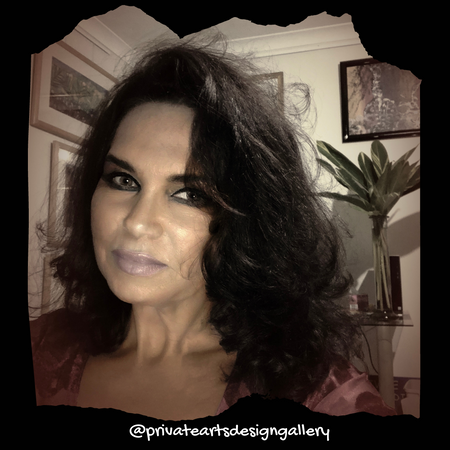
As an artist, I constantly seek new experiences and horizons to nurture my creative juices. I have always had a fascination with Japan’s transformation from the Samurai dynasties to the modern democratic Japan. With century old traditions, Americana influence of pop culture and western fashion combined with rapid advancements in technology produce an eclectic fusion of commercialism and old-world charm.

When someone mentions Japan, what images are conjured up in your mind? Perhaps Mt. Fuji, cherry blossom season, the towering skyscrapers of Tokyo, some of the best skiing in the world. Or Japanese style animation often depicted through colourful graphics, vibrant characters and fantastical themes (referred to as anime and manga). Do you also think of women clad in Japanese kimonos holding an umbrella or a fan? Maybe!
So, jumping at the opportunity to explore another culture and be inspired, I was ready to take a break from Australia’s hot humid summer climate and brave the cold Japanese winter
To be truly inspired creatively in Japan, you need to immerse yourself into the old culture, appreciate the discipline, respect and honor of the Samurai, which still remains a significant part of Japan’s modern culture that the world admires. Be intrigued by the delicately adorned mythical women who artistically entertain mainly male audiences known as maiko, geiko or geisha woman.
The imperial gardens and Japanese flora play a significant role in the beautiful floral art and designs found in virtually all Kimono fabrics and the Sensu or Ougi or folding fans.
Geisha for a day
I have a huge affinity with the geisha, as a person of art. Their other perceived purpose is a ‘server or entertainer of men’ (non-sexual) which is at complete odds of who I am. So, let me just focus on the artistic or learnt talents in art, music, dance, and styling skills. The traditional kimono is an intriguing layering of volumes of fabric, that is bursting with color, which makes you feel very special and surreal.
For tourists visiting Kyota, the Gion district is a must. If you want to experience a geisha makeover at a hensin studio and embrace a traditional custom for a day. I will let you in a little secret, most of the geisha walking around the popular spots in Japan will most likely be a tourist in geisha dress up.
There are strict guidelines on henshin studios, whereby they make it a point NOT dress up their tourist clients authentically. Japanese respect their old traditions, as a result the authorities will shut them down if old customs are not respected.

Ok, so I had to dress up and momentarily become a geisha for a day. Wow, the transformation was magical, and I felt beautiful and sweet. Stunned my family and friends in Australia as I declared I had this fantasy of being a geisha. What I found amazing, was the response from the public, both Japanese and tourist. Nevertheless, I found my inner Japanese connection and found inspiration from the cultural experience. What is it you are wondering?
Ikebana Movement
The Japanese use of flowers to create art using color, line and form into a natural work of art, is call Ikebana. I was introduced to Ikebana as a teenager by my Aunt Priscilla in South Africa, who was a much sought-after florist decorating churches and wedding events. I immediately fell in love with the art of flower arranging. At that young age I did not fully understand interpreting emotion, movement symbolism to capture the soul. I find Ikebana a form of meditation as each placement of each element is a thoughtful process, essentially you are creating a sculpture.
As an artist, developing, expanding and combining ideas and cultural inspiration across mediums, takes me out of my comfort zone and further opens up curiosity in developing my creative journey.
Today, Ikebana is widely practised throughout Japan and growing in popularity around the world. More than just 'arranging flowers' Ikebana is an art form where the arrangements emphasise unusual parts of the plant or flower, including stems, leaves, or a single bud. Creatively, the focus is upon form, shape, line, and colour with the actual container of the arrangement playing an integral part of the overall design. Characterised by minimalism, the traditional arrangement structure is said to be based on a triangle—possibly reflecting the sun, moon, and earth.
As a flower reveals the soul, and at sometimes throughout our lives, we have given or received red roses as a declaration of love, passion and beauty. White roses represent innocence, purity and secrecy. Yellow roses symbolise joy, delight and friendship. Pink roses represent admiration, sympathy and sweetness. Orange roses represent fascination, desire and enthusiasm.

Beyond an aesthetic practice, Ikebana possesses a spiritual element, practitioners undertake the process in silence in order to reconnect internally (similar to meditation) and to nature.
Ikebana transcends into modern innovation
Embracing thoughtfulness of simplicity, design and structure, the basics of Ikebana have been adopted by the most successful entrepreneurs of today. The Japanese Zen principles have influenced Steve Jobs in his vision, design and product development across Apple.
The Ikebana practice leads to creative expression within certain rules of construction, while enhancing strategic thinking to innovative minds looking for inspiration, problem solving, cultural bridging and thinking out of the box.
Simply put, Private Arts Ikebana shares our love of art, design, nature and flowers. We hope you discover the beauty and self-expression of each thoughtful artistic display.
If you enjoyed or found inspiration for reading this blog, we would like to share more stories with you.


